#ngiyampaa
Explore tagged Tumblr posts
Text
"In an open-air courtroom set up in a nature reserve in Western NSW, a four-nation clan has secured one of the largest native title claims in the region's history.
Far from the four walls and formalities of a federal courtroom, Justice Melissa Perry delivered her determination at Newey Reserve in Cobar on Wednesday, recognising the native title rights of the Ngemba, Ngiyampaa, Wangaaypuwan and Wayilwan peoples.
The decision marks the successful end of a 12-year legal battle that began in 2012.
The claim covers more than 95,000 square kilometres of land and water from the Barwon River in the north, to the Lachlan River in the south, the Castlereagh River in the east and Ivanhoe to the west.
It recognises native title rights including the right to hunt, fish and gather resources, the right to access and camp on land and right to protect places of cultural and spiritual importance.
A legacy for future custodians
Aunty Elaine Ohlsen, a Ngiyampaa Elder from Cobar and one of the original applicants, said the decision brought her "mixed emotions".
"I just persevered," she said.
"We've been through a lot of trials and tribulations to get here, but I'm someone who won't give up fighting for our people."
"These sorts of things need to happen all the time, because we need to know who we are and where we come from and where we are in this country."
Aunty Elaine hopes the determination will inspire future generations to continue their ancestors' legacy.
"Hopefully, this will encourage them to stay connected to their country, heritage, and culture, and to carry on the hard work we've done," she said.
Vision for the future
Wangaaypuwan man and claim applicant John Shipp recently camped on country with four generations of his family.
He said the recognition of native title meant they could continue to do so without fear of being moved on.
"It's just those little things that give us our connection back to our land, our heritage, our culture," he said.
The native title holders have now formed the Ngemba, Ngiyampaa, Wangaaypuwan Wayilwan Aboriginal Corporation (NNWW Corporation) to manage their rights.
As a director of the NNWW Corporation, Mr Shipp sees the determination as the beginning of a new chapter...
As for Mr Shipp's message to other Indigenous groups fighting for recognition?
"Keep going — it's getting better, it's getting shorter, it's happening, just keep going," he said."
-via ABC News Australia, August 14, 2024
#indigenous#indigineous people#australia#new south wales#land back#indigenous rights#decolonization#first nations#aboriginal#Ngemba#Ngiyampaa#Wangaaypuwan#Wayilwan#good news#hope
1K notes
·
View notes
Text
Burra-Bandhaa (Kareela in The Amazing Digital Fight Club)


So a while ago (specifically in August of this year), I drew a version of my TADC OC Kareela if she were in The Amazing Digital Fight Club, an AU made by @burrotello. Idk why I decided to share it now, but here you go.
She fights using kickboxing, which I know is different from regular boxing, but I decided to have her be a kickboxer because not only did I feel it'd make her stand out more, I also thought it'd be fitting for her as an Aboriginal Australian (for context, this character is an Aboriginal Australian character, and her tribe's culture is based on multiple different Aboriginal groups), since originally, before I found out TADFC was a boxing AU, she was going to be a coreeda fighter, coreeda being a fighting style that was based on the fighting style of male red kangaroos (the name even coming from the Ngiyampaa word for "kangaroo hunting"), and a common trope in media you'll often see, usually in things like animation and cartoons, I think also video games, is the kickboxing kangaroo. Idk the exact origins of a kangaroo being depicted as a kickboxer, but I assume that it comes from how male kangaroos, when they fight, it kinda looks like kickboxing. So because of kickboxing having an association with kangaroos, at least in media or pop culture, I decided that would be a creative way of incorporating the fighting styles of kangaroos into Kareela's fighting style, being somewhat of a reference to coreeda (at least in the fact that they're both based on how kangaroos fight), while having her still be a boxer. It's a different kind of boxer, but still.
Btw, since drawing this version of her (as in more recently I came up with this name), I've decided that her boxing name would be Burra-Bandhaa, which is Wiradjuri for "jumping kangaroo", "bandhaa" in particular being the word for "female red kangaroo". (I know technically the actual translation would be "jumping female red kangaroo", but I felt like "jumping kangaroo" also would be an accurate English translation too, it just wouldn't be a literal translation.) I got this translation from the WCC (or Wiradjuri Condobolin Corporation) Language Program app, which is kinda like an English-Wiradjuri dictionary. If this isn't a correct translation, then I sincerely apologize, and feel free to correct me.
Also, one more thing, for some reason I keep imagining TADFC Kareela having a theme similar to Elena from Street Fighter 3's theme (HQ version). Idk why I assiociate Elena's theme with her when Elena is Kenyan and Kareela is Aboriginal Australian. I guess because the vibe of the song fits Kareela to me? Probably that. Lol
Edit: I forgot to mention her design was somewhat based on Gummigoo's (aka Migo's) design for The Amazing Digital Fight Club.
Her outfit also was originally gonna be more based on Elena's outfit as well (well, the bikini-looking portion specifically), but I couldn't figure out how to do it, so I came up with this instead, with a bit of help with a friend. The red and black are a reference to the Aboriginal Australian flag. Honestly, I really like how it turned out.
The lore for her in this AU would be she wanted to fight in the Digital Fight Club, but after finding out that NPCs couldn't fight in the Digital Fight Club (for context, Kareela was always an NPC, even in her original iteration), she decided to just fight people on her own, kinda like how Gummigoo decided to remain a street fighter (no pun intended, since I mentioned Elena earlier).
She gets along well with the other characters (except Jax), including Gummigoo, Max and Chad, and I imagine she's very agile with the way she fights, so she'd have a high agility stat. (I gotta make a version of this with the stats and everything, like the original TADFC images).
#the amazing digital fight club#tadc boxer!au#the amazing digital circus#tadfc#tadc#tadc oc#gummy crocodile#gummy alligator#kickboxing#kickboxer#tadfc oc
7 notes
·
View notes
Text

Message From Mungo (2014) is still one of my favourite Australian Indigenous archaeology documentaries (and documentaries in general but that is not the point)

Like if you want to learn about repatriation and involvement of Traditional Custodians in Australian archaeology - but also like... Aboriginal archaeology (in NSW at least) in general its just so good ok
(technically you can watch it here - but only if you have an Australian VPN)
#every time i watch it i forget how good it is#also like#it takes a lot to get your interview subjects looking that comfortable#especially when youre discussing sensitive topics#like burial repatriation#archaeology#repatriation#Mungo Lady#Australian archaeology#Indigenous archaeology#Barkandji#Mutthi Mutthi#Ngiyampaa#tw human remains
199 notes
·
View notes
Photo

Endangered Languages Challenge: Ngiyampaa
Name: Ngiyampaa also Ngiyambaa; Ngiamba; Ngaiamba; Nyamba; Ngiumba; Gaiamba; Ngemba; Ngeumba (Parrintyi by Paakantyi neighbours)
Genealogical Affiliation: Pama-Nyungan
Main Dialects: Wanggay (’no’) or Wanggaybuwan - spoken in the south
Wayil or Wayilwan - spoken in the north
Location: Central New South Wales, Australia. Bourke; Cobar; Nyngan; Ivanhoe; Willandra Creek; Bogan RIver.

Number of Speakers: The National Indigenous Languages Survey 2005 Report estimated 2 speakers of Ngiyampaa. These are low as most Aboriginal people do not like to give information freely because of unethical practices by anthropologists and linguists in the past.
Why is the language endangered? Step 2 of Process of Colonisation as outlined by Prof Virgilio Enriques: Destruction/Eradication. The forced removal from families, and the dispossession of many Ngiyampaa people contributed greatly to the destruction of the Ngiyampaa language. Many families were rounded up from areas around Cobar, Hillston, and Ivanhoe, and driven by the truckloads to Missions in Victoria (Yelta) and Menindee. There was widespread destruction of kinship links, and ties to Country that exacerbated the disintegration of the language. This was a targeted effort as part of Australian government policies of assimilation and cultural genocide of Indigenous populations.
Speaker Group:
Artwork of Mullian (wedge-tailed eagle) by Millmullian the Artist
Eric Avery is a Ngiyampaa violinist and Language Knowledge Holder
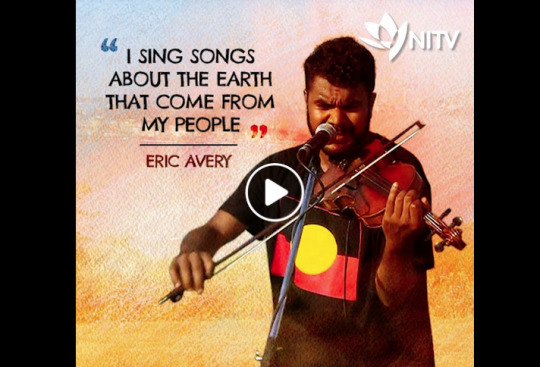
https://www.facebook.com/NITVAustralia/videos/367590474067450/
The Kelly/Pappin family are spokespeople for the Ngiyampaa people in cultural and linguistic conservation, as well as Native Title and Land Rights
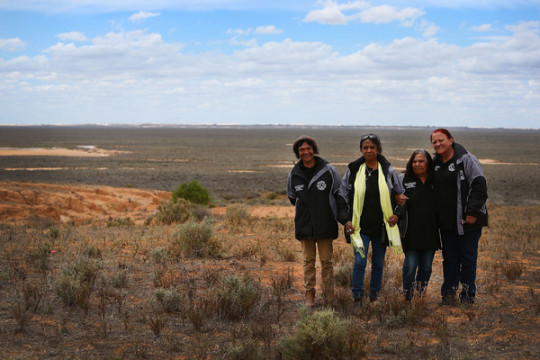
Vitality & transmission: According to AUSTLANG, Ngiyampaa is “no longer fully spoken” (endangerment grade 0).
Media/Literature/Instruction: Joining The Dreaming Aboriginal Corporation at Broken Hill is developing language kits with posters, workbooks and DVDs (2007).

(My great-grandfather Dave Harris is singing and telling stories in Ngiyampaa on this cassette recording)
Word List in the Macquarie Aboriginal Words Dictionary
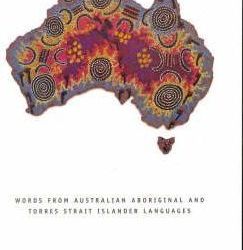
References:
Donaldson, Tamsin. 1978. Interim dictionary of Ngiyambaa of the Wangaaybuwan.
Donaldson, Tamsin. 1980. Ngiyambaa: the language of the Wangaaybuwan. Cambridge: Cambridge University Press.
#endangeredlanguageschallenge#endangered-languages#ngiyampaa#indigenous languages#aboriginal languages
67 notes
·
View notes
Note
Yes i cannot recommend it enough! It does such a good job of explaining the influence that Lady Mungo had on repatriation and consultation with Indigenous communities, and does amazingly at least covering the basics of why repatriation is so important in Australia, especially for burials. It really shows the ways in which the burials at the Willandra Lakes were so integral in the conversations between academics and the Barkandji, Mutthi Mutthi and Ngiyampaa peoples.
youtube
this video explains a little of what went into the making of the documentary, and has one of my favourite descriptions of the way in which Indigenous perceptions of time plays such an integral role in repatriation and telling histories
is it the mungo man and lady?
It is recognizable as the shape of a human body
It is not made of stone
It is not made of wood
It cannot be held in your hand
It is not carved into the landscape
It is not made of clay
It is not made of metal
It was not found in the Americas
It is not in Europe
It is not in South Asia
It is the body of a person... two people, actually
It is in Oceania
They are human remains
IT IS THE MUNGO MAN AND MUNGO WOMAN!!!

The sets of remains were found in 1969 and 1974. LM1 is one of the earliest examples of a cremation burial, and LM3 is one of the earliest anatomically modern humans found in Australia. The wear on LM3's teeth and bones suggest that the individual was probably around 50 years old at the time of their death.
Mungo Man was repatriated to the descendant community in 2017, while Mungo Lady was repatriated several decades earlier in 1992. There was some push-back from certain members of the scientific community about the repatriation and interment of the remains. I personally believe that respect for the traditions and culture of descendant communities must trump the desire for any potential scientific inquiry.
-Reid
#Willandra Lakes Region World Heritage area#Mungo Lady#archaeology#australian archaeology#indigenous archaeology#Aboriginal and Torres Strait Islander peoples#tw human remains discussion#Mutthi Mutthi#Barkandji#Ngiyampaa
89 notes
·
View notes
Text

Found slide: Approaching Nyngan from Sydney, Ngiyampaa country, New South Wales, slide developed September 1976 (photographer unknown)
44 notes
·
View notes
Photo
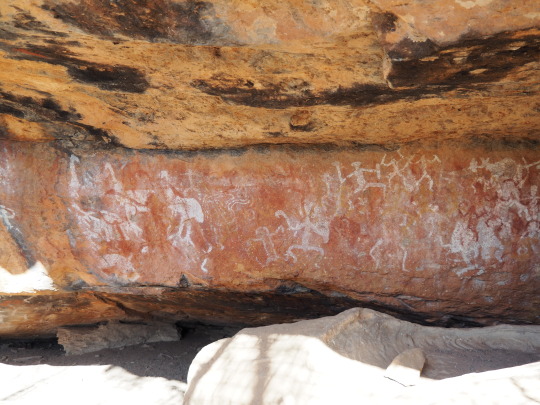
One of the treasures you’ll see in this set is some wonderful aboriginal / indigenous art. Here we are at Mt Grenfell at Cubba, NSW just a little west of Cobar. Deep under 4 or 5 rock overhangs, the galleries are very rich. If you look closely you’ll see emus, kangaroos, hunting parties and dancing, as well as a hand stencil or two and some things I can’t identify. Age of the paintings unknown (by me). The site is still maintained by it’s traditional (indigenous) owners, the Ngiyampaa peoples.
#ahstitt.com#Mt Grenfell#Cubba#Cobar#rock art#indigenous art#aboriginal art#figurative painting#ochre painting#hand stencils#NSW#australia
2 notes
·
View notes
Text
Endangered Languages Challenge - Master list 1

Thank you for everyone who participated, especially the authors!
I am delighted to see that so many of you liked and reblogged the entries.
Here’s a list of all the contributions I am currently aware of:
by @turtleisland-languages
Oneida
by @dystonia-linguist
Mansi
Mising
by @helleniclanguageboy
Cypriot Arabic
Cypriot Arabic - Sanna
by @languageoficeandfire
Carib
Aleut
by @perkeleet-paassani
Chuvash
Manchu
Komo
by @siancore
Paakantyi Palku
Ngiyampaa
Gamilaraay
by @practicingtheliberalarts
Catawba 1
Catawba 2
Catawba 3
Catawba 4
Catawba 5
Catawba 6
by @phonaesthemes
Łingít
Udi
Malecite & Mi’kmaq
Canadian Gaelic
Tłıchǫ Yatıì
Tiéfo
by @injerabae
Ongota
Kujargé
Argobba
Sirzakwai
Láàl
Aasáx
by @languagesandshootingstars
Ainu
Livonian
Yukaghir
Yeyi
Chipewyan
Tehuelche
Palawa Kani
by @linguisten
Dyirbal
Resígaro
Livonian
Yurok
Uma’ Lung
Takuu
Yaghan
#endangeredlanguageschallenge#lingblr#linguistics#endangered languages#sociolinguistics#language documentation
135 notes
·
View notes
Text
Mungo Man: Australia's oldest remains taken to ancestral home
New Post has been published on http://usnewsaggregator.com/mungo-man-australias-oldest-remains-taken-to-ancestral-home/
Mungo Man: Australia's oldest remains taken to ancestral home
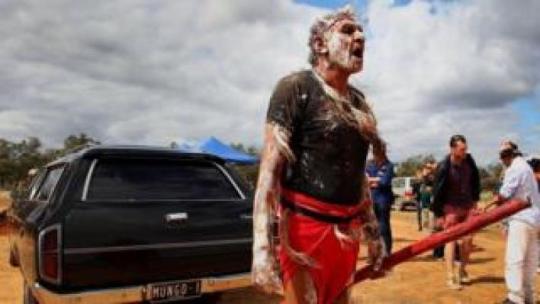

Image copyright Getty Images
Image caption The return of the remains was welcomed with a traditional ceremony
For decades, Australia’s oldest human remains – an Aboriginal man who died about 42,000 years ago – have been stored in a university and a museum.
But on Friday, the skeleton known as Mungo Man was brought back to his traditional home in New South Wales and honoured with a ceremony.
It marked the end of a long campaign by indigenous Australians to return Mungo Man to his original resting place.
The discovery of the skeleton in 1974 helped rewrite Australia’s history.
Research determined that Mungo Man had been buried in a complex funeral ritual, redefining scientific understanding of early Australians.
Who was Mungo Man?
The skeleton was unearthed by geologist Jim Bowler from a dry lake bed in Mungo National Park, about 750km (470 miles) west of Sydney, in what was hailed a major discovery.
Mr Bowler had already discovered the remains of a woman, known as Mungo Lady, in 1967.
Image copyright NSW OFFICE OF ENVIRONMENT & HERITAGE
Image caption Mungo Man’s repatriation was completed on Friday
The remains of Mungo Man were taken to the Australian National University in Canberra to be studied.
Carbon dating showed they were about 42,000 years old – Australia’s oldest known human skeleton.
Scientists determined that Mungo Man had been a hunter-gatherer with arthritis who died around the age of 50.
He was buried on his back with his hands crossed in his lap, and covered with red ochre. Scientists believe the ochre was most likely sourced about 200km from the burial site.
Distress over Aboriginal child’s exhumation
Long journey home
Indigenous Australians from the region have long called for the remains to be returned, saying his removal caused great pain.
Representatives from the Mutthi Mutthi, Ngiyampaa and Paakantji/Barkandji communities held a ceremony to mark the occasion on Friday.
“So good to have him back after all those years he has been taken away,” said Mutthi Mutthi elder Mary Pappin.
Image copyright Getty Images
Image caption The remains made a three-day journey from Canberra to Mungo National Park
“We have been waiting all those years to get him back and I’m so glad he is back, to put him in his resting place.”
He will be buried in a secret location in Mungo National Park. Mungo Lady was returned to the site in 1991.
The Australian National University relinquished the remains in 2015 and apologised for causing hurt over Mungo Man’s original removal.
In an article for The Conversation in 2015, Mr Bowler wrote: “In 1974, in that remote saltbush country between the rivers, Aboriginal advice remained unavailable to us.
“Subsequently, when Mungo Man’s discovery was announced, Aboriginal people expressed anger that this should have been done without the permission of Aboriginal people.”
For the last two years, the remains have been kept at the National Museum of Australia in Canberra while repatriation plans were being finalised. His remains, along with 104 others, were collected earlier this week.
The recovery of ancestral remains has often been a source pain for Aboriginal Australians. Campaigners say many skeletons removed without permission are yet to be returned, with some housed in museums overseas.
In July, archaeologists found the first evidence to suggest that Aboriginal people have been in Australia for at least 65,000 years.
Original Article:
Click here
0 notes
Photo

Today’s word as part of our new summer series: ‘Word of the... http://ift.tt/2tAWDrt

Today’s word as part of our new summer series: ‘Word of the Week: Place Names’ is ‘Yarrawin’ and was recorded in the Bourke District as meaning ‘Yarra Tree’ in the Wangaaypuwan or Ngiyampaa languages.
This place name was chosen from Muru View – an interactive data visualisation launched during NAIDOC Week 2017 which draws on the State Library’s rich and diverse Indigenous language collections.
The data used in Muru View is over 120 years old, and is taken from the survey forms collected by the Royal Anthropological Society of Australasia.
By sharing this historic data, we hope to encourage discussion around the place names and meanings that were recorded.
If you know more about the place names featured in Muru View, we would love to hear from you!
If you want to get involved, you can help us by transcribing our diaries, letters, manuscripts and records. Click here to find out more.
0 notes
Photo

Found this cassette recording of my great-grandfather speaking Ngiyampaa language and telling stories. I don’t know who gave it to my Dad because I’ve heard AIATSIS don’t make it easy for Aboriginal families to access recordings of languages and family histories that non-Indigenous linguists made and built their careers on. Something about researcher’s copyright. My Dad still remembers linguists coming to our communities, making recordings of our languages, and paying our Elders with tobacco. Yet we have to jump through hoops to even get access to recordings of our ancestors’ voices and sign paperwork to say we won’t use it in our own academic research. They colonise everything! Anyway, where to find a cassette player…
318 notes
·
View notes
Photo

Our Word of the week is CobarAccording to Boxes 4-5: Survey... http://ift.tt/2mQ1KMs
Our Word of the week is Cobar
According to Boxes 4-5: Survey forms and correspondence received by the Royal Anthropological Society of Australasia regarding Aboriginal place names, 1899-1903, 1921-1926 Cobar means “Red clay”. This appears to be in Ngiyampaa, Wayilwan or Wangaaypuwan language.
If you want to get involved, you can help us by transcribing our diaries, letters, manuscripts and records. Click here to find out more.
It is important to note that these records were written in most cases about Aboriginal languages by non - Aboriginal people. For this reason, the written words may not accurately reflect the ways in which an oral language was spoken and transmitted.
0 notes
Photo

Our Word of the week is Terrabella.The word was recorded in the... http://ift.tt/2nnWinG
Our Word of the week is Terrabella.
The word was recorded in the region of Nyngan New South Wales.
According to Boxes 4-5: Survey forms and correspondence received by the Royal Anthropological Society of Australasia regarding Aboriginal place names, 1899-1903, 1921-1926 Terrabella means “Heap of rocks”. T
The letter sent for this collection sheet was from the Surveyor in Dubbo, who had been collecting names in this region. Searching Aboriginal langauge groups in this area, the word could be associated either with the Ngiyampaa or Wayilwan language.
We would love to hear more from communities if you know more about the words in the list!
If you want to get involved, you can help us by transcribing our diaries, letters, manuscripts and records. Click here to find out more.
It is important to note that these records were written in most cases about Aboriginal languages by non - Aboriginal people. For this reason, the written words may not accurately reflect the ways in which an oral language was spoken and transmitted.
0 notes